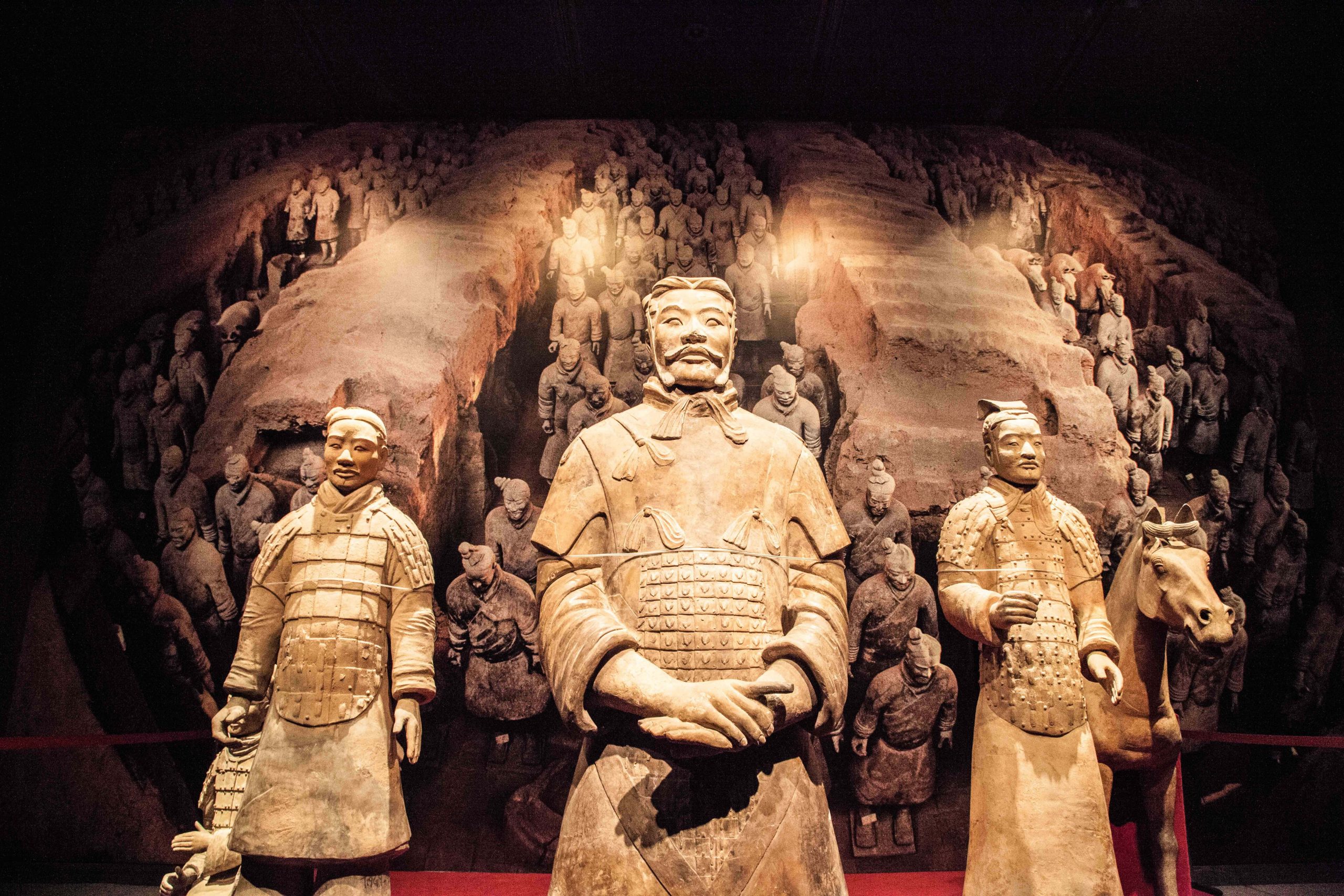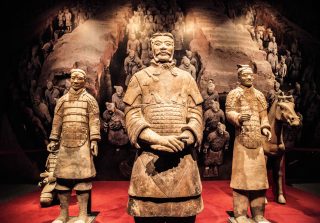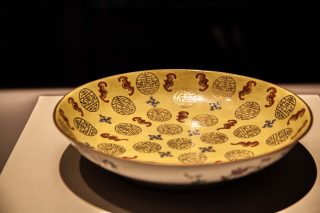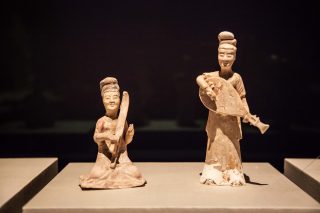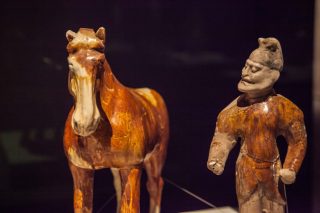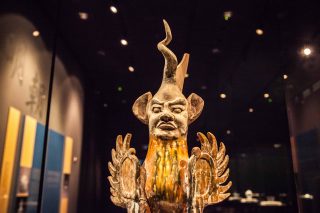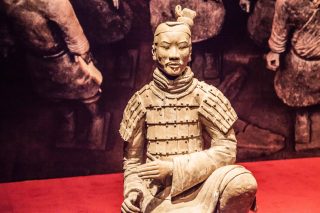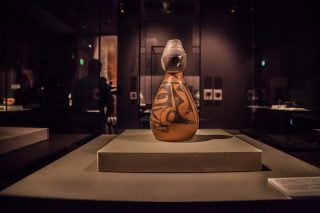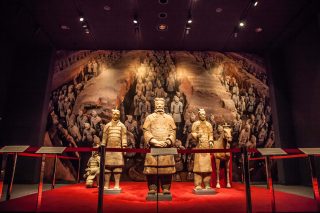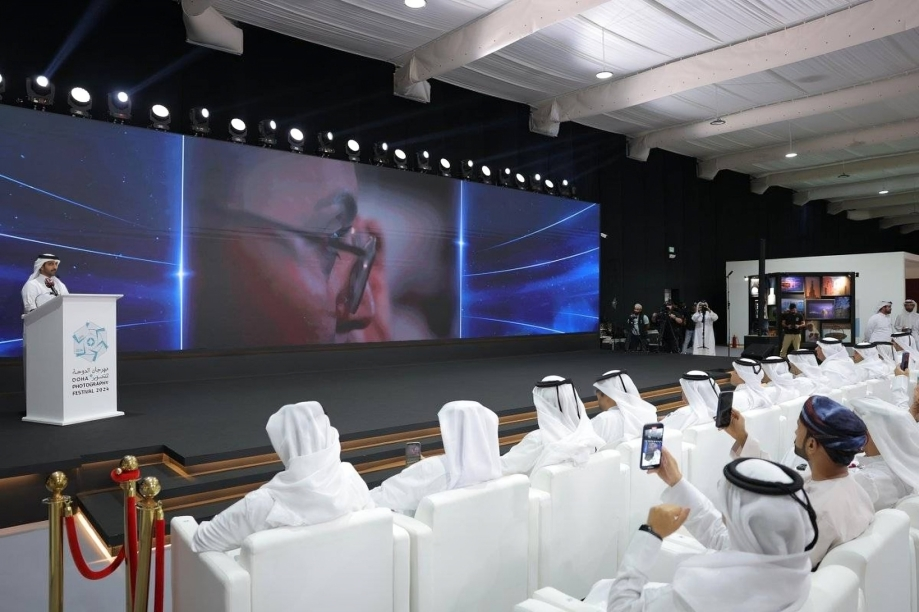All photos by Reem Saad
A new art exhibit that includes 2,000-year old pieces from China’s renowned Terracotta Army opens to the public today at the Museum of Islamic Art (MIA).
The four warriors and horse date back to the Qin Dynasty (221-206 BC) and are being shown in the Middle East for the first time as part of a Treasures of China exhibition.

The entire exhibit spans 5,000 years of Chinese history and features 116 pieces of bronze, pottery, gold, silver, jade and enamelware borrowed from five museums in China.
It is one of a number of events organized as part of the ongoing Qatar-China Year of Culture.
Protection
Visitors to the MIA will be taken on a three-part journey, starting with the Neolithic period, in the section The birth of civilization, ceremonies and kingdoms.
This features around a dozen pieces of bronze ware such as jugs and other drinking vessels, many of which are intricately engraved with animal figures and which date back 3,000 years.
They are on loan from the Palace Museum Collection in Beijing.
The warriors – two of which are outside of China for the first time – are at the heart of the second section, Splendid unification, prosperity and the Silk Road.
The largest of the figures is a general, who stands at the center of the exhibit. His high-shaped headgear, imposing stature and armor denote his rank in the army.

He is flanked by two other standing warriors, who have traveled outside of Qatar for the first time.
There is also a horse and a kneeling archer figure.
The sculptures are among thousands of pieces that once furnished the tomb of Qin Shi Huang, China’s first emperor, in the belief that they would protect him in the afterlife.
The pieces lay undiscovered for thousands of years until some farmers unearthed them in 1974.
So far, at least 8,000 pieces have been uncovered across three pits – the largest of which is equivalent to 50 basketball courts in size – next to the emperor’s mausoleum near Xi’an in central China.

The entire collection includes soldiers of varying ranks, chariots and horses.
Each piece was painstakingly modeled on real people or animals to portray life-like size, facial expressions, clothing, gestures and hairstyles. No two pieces are the same.
When first made, they would have been vividly painted in bright colors.
However, they have now faded to a reddish-brown terracotta color, said Xu He, curator of Art Exhibitions China, which put together the MIA collection.
Islamic influences
Throughout the exhibition, there are a number of pieces that reflect the connection between the Middle East, Islamic art and Chinese craftsmanship.

For example, a large, tri-colored pottery camel from the Tang dynasy (618-907 CE) portrays the means of land travel for those in the early days of the Silk Road.
The third and final section Porcelain, Imperial China and the Royal Arts features artifacts up to the early 20th Century.
It includes a plate and a ceramic box with lid from the Ming dynasty (1368 – 1684 CE) which are adorned with blue-painted Arabic calligraphy.

Other highlights include more contemporary pieces from the Qing dynasty up to the early 20th Century such as a detailed, enameled incense burner and an engraved jade brush pot.
The final item in the exhibition is a yellow plate that would have been used by an Empress for birthday celebrations, Xu said.
It features circle patterns detailed in gold to bring the user long-life, while also including a repeated bat pattern.
“The Chinese pronunciation of bat is the same as that for the word which means ‘luck,’ so it was designed to bring good fortune for the user,” Xu added.
Cultural exchange
Launching the exhibition yesterday, Mansoor bin Ebrahim Al-Mahmood, acting CEO at Qatar Museums, said in a statement:
“Whilst Qatar and China are two countries that may be far apart, they have more in common than visitors realize, including shared values based on education, hospitality and cultural curiosity, strong economic ties and positive diplomatic relations that date back to the 1980s.”
Later in the year, a number of educational events will be held in conjunction with the latest MIA exhibition.

This will include a four-part workshop, where children can make clay sculptures inspired by the exhibition and the warriors, QM said.
The MIA exhibition follows the success of two previous events held earlier this year to mark the year of culture – Silks from the Silk Road, which was held at Katara and What about the Art? which was at Al Riwaq.
Treasures of China is on display at MIA’s special exhibitions gallery on the ground floor and is free to enter. It runs until Jan. 7, 2017.
Thoughts?

